Contents
- 1 Overview
- 2 Introduction: An In-Depth Journey into the World of Pork
- 3 Unearthing the History of Pork: From Domestication to Delicacy
- 4 Pork Breeds: Understanding the Varieties and Their Unique Qualities
- 5 Pork: A Detailed Look at Its Nutritional Profile
- 6 Pork: A Versatile Star in Different Meal Types
- 7 Mastering Pork Cooking Techniques: From Braising to Grilling
- 8 Key Pork Recipes: Staples in Every Meat Lover’s Kitchen
- 9 Perfect Partners: Pairing Pork with Spices, Sauces, and Side Dishes
- 10 The Unexpected Health Benefits of Pork: From Protein to Micronutrients
- 11 Pork in Culture and Folklore: An Ingredient with a Story
- 12 DIY Guide: From Farm to Table – Raising and Butchering Your Own Pork
- 13 Seeking Substitutes: Alternatives for Pork in Diverse Recipes
- 14 Essential Tools and Gadgets for Cooking Pork: Your Kitchen Checklist
- 15 Avoiding the Pitfalls: Common Mistakes When Preparing Pork
- 16 Test Your Pork Knowledge: Interactive Quiz
- 17 Conclusion: Understanding the Versatility of Pork
Overview
- Introduction: An In-Depth Journey into the World of Pork
Explore the versatile journey of pork, a popular protein in various cuisines. Its complex profile allows it to blend harmoniously with different flavors, making it a staple in signature dishes. From succulent tenderloin to smoky pulled pork sandwiches, the culinary possibilities are endless. - Unearthing the History of Pork: From Domestication to Delicacy
Pork has a fascinating history, from its domestication to its modern-day recipes. It has played important roles in various cultural celebrations and traditions. In China, dishes like sweet and sour pork symbolize abundance and prosperity, while the pulled pork sandwich is a beloved part of American barbecue culture, representing camaraderie and summer gatherings. - Pork Breeds: Understanding the Varieties and Their Unique Qualities
Understanding different pig breeds is crucial when discussing pork. Each breed contributes to the flavor profile of the meat. For example, the Iberico pig produces fatty and luxurious meat, while the Berkshire breed results in highly marbled Kurobuta pork. These unique qualities can enhance your culinary creations. - Pork: A Detailed Look at Its Nutritional Profile
Pork is a nutritious choice, offering high-quality protein and essential vitamins and minerals like Vitamin B6, thiamin, phosphorus, niacin, and selenium. Pork loin recipes or baked pork chops are not only delicious but also provide a wholesome meal option. - Exploring the Culinary Uses of Pork: From Barbecue to Charcuterie
Pork is a versatile ingredient that can be used in a variety of dishes. From barbecue favorites like smoked pork butt to gourmet delights like pork belly recipes, the possibilities are endless. It’s also a key ingredient in comfort foods like pulled pork sandwiches and Sunday dinner pork loin roast. Additionally, pork is essential in charcuterie with staples such as sausages and cured meats. Let your creativity shine with pork in the kitchen!
Introduction: An In-Depth Journey into the World of Pork
Imagine a sizzling skillet filled with smoked pork chops, their aromatic juices infusing the air, or a pork shoulder slowly roasting in the oven until it yields succulent pulled pork. Few ingredients are as versatile, delicious, and deeply ingrained in global cuisine as pork. From pork loin roasts to crispy pork belly and even pork rinds, this meat is not only a source of protein but also a symbol of rich culinary traditions and comfort food.
Renowned for its tenderness and ability to absorb flavors, pork graces the tables of families, fine dining establishments, and street food stalls alike. Despite its omnipresence in many dishes like pork fried rice, pork tacos, and pork buns, the world of pork extends far beyond these staples. This journey into the universe of pork aims to delve deeper, shedding light on its fascinating history, varieties, culinary uses, and even some unexpected health benefits.
Over the course of this guide, we’ll explore how to select and store your pork, and share secrets on mastering various cooking techniques to bring out the best in your pork recipes. From pork loin recipes and pork chop recipes, including sirloin chops, to the ins and outs of instant pot pulled pork, this guide will serve as your go-to manual for all things pork.
Join us as we delve into the world of pork, where every breed, cut, and cooking technique tells a tale of taste, tradition, and tantalizing flavors. Your journey to becoming a pork connoisseur starts here.
Pro tip: As we start this journey, always remember that good quality pork buying is the foundation of any great pork dish. Choosing the right cut for the right recipe and treating it with respect can elevate your cooking to new heights.
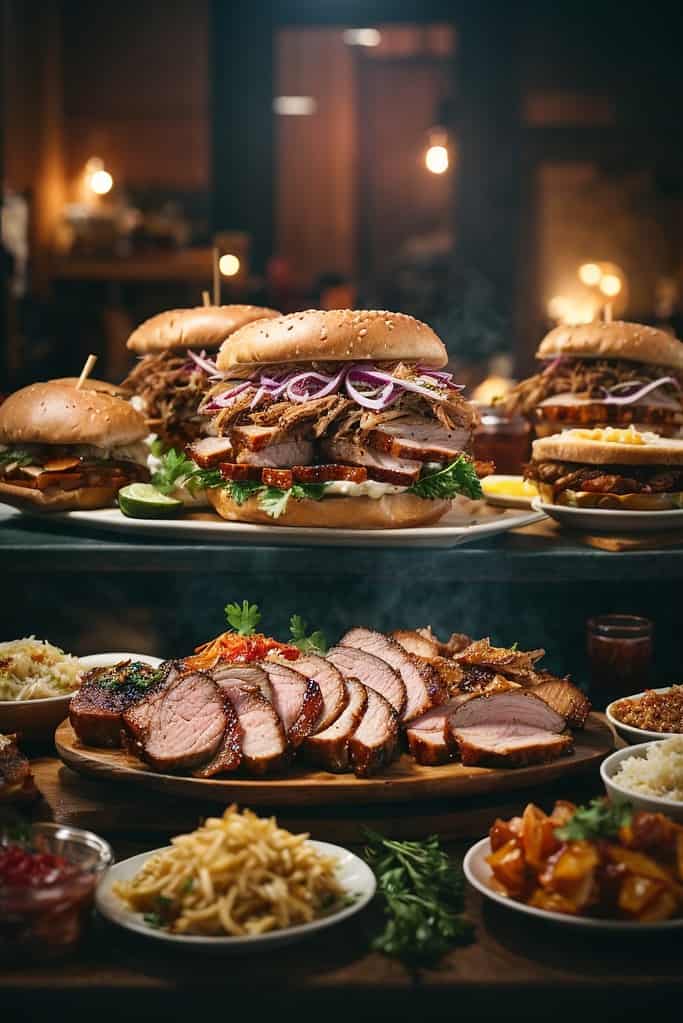
Unearthing the History of Pork: From Domestication to Delicacy
As we embark on this swine-centric journey, it’s essential to peer into the annals of history to truly appreciate the story of pork, a meat so deeply intertwined with human culture and gastronomy. In many corners of the world, pork is far more than a simple protein source; it’s an embodiment of shared traditions, an ingredient steeped in lore, and a tasteful testament to mankind’s culinary evolution.
An Ancient Tale of Domestication
The bond between humans and the pig dates back to prehistoric times. As early as 7000 to 5000 BC, in regions of Europe and Asia, our ancestors began the domestication of wild boar, the fierce forefathers of today’s docile pigs. These early cultivators likely favored pigs due to their resilience and adaptability, attributes that made them reliable sources of sustenance in diverse environments. Today, pork remains a popular meat choice, with many recipes featuring pork fillet as a delicious and versatile option.
It’s fascinating to contemplate how these early domesticated swine gradually transformed into a plethora of unique breeds, such as the succulent pork belly-yielding Duroc, or the Yorkshire, known for its delectable pork loin chops. You can find these and other pork cuts at your local grocery store.
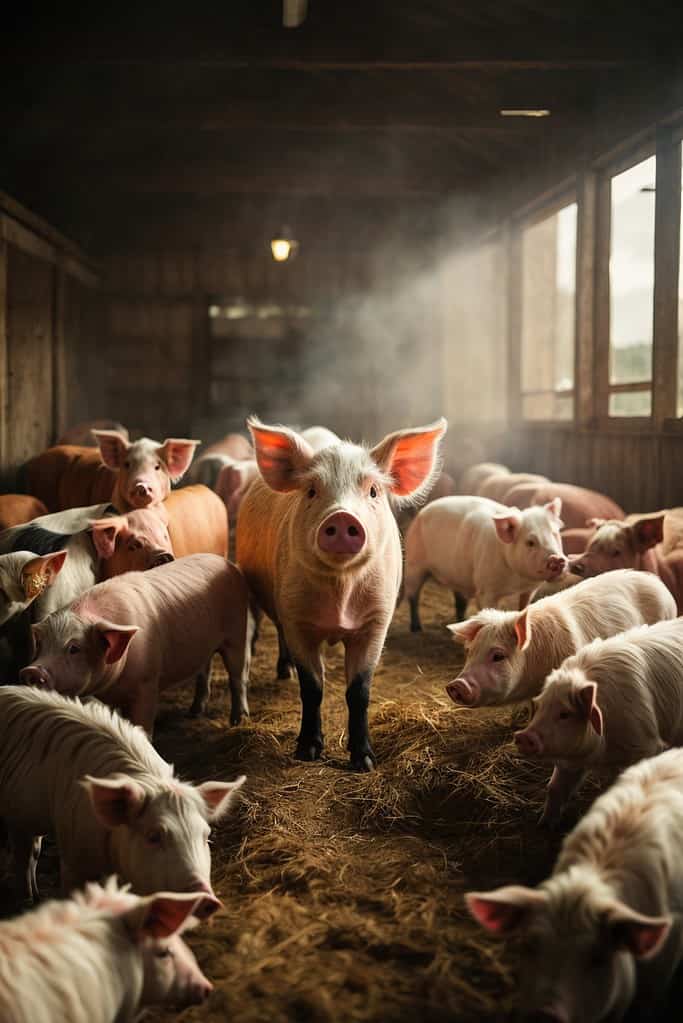
A Delicacy with Global Appeal
Pork’s versatility as an ingredient is nearly as impressive as its history. This meat has found a place in the heart of diverse culinary traditions, providing a variety of dishes that people love and cherish across continents. One popular ingredient in Italian cuisine is pancetta, a type of cured pork belly that is similar to bacon but with a distinct flavor.
In North America, the pulled pork sandwich is a renowned comfort food, while the pork tenderloin recipes are a staple in many households. The French have their richly flavored pork-based charcuterie, and Italians revere prosciutto, their version of dry-cured ham. Meanwhile, in China, sweet and sour pork remains an iconic dish, and pork belly serves as the delicious foundation for Korea’s beloved samgyeopsal. And let’s not forget the mouth-watering baby back ribs, a classic American barbecue dish that has gained popularity worldwide.
Not to forget, pork rinds, also known as chicharrones, have been a crunchy delight in Latin American cuisines for generations. From this, it’s clear that the global affection for pork stretches from the sizzling pork chops of American barbecue grills to the aromatic pork dumplings of Asian dim sum.
Cultural Significance and Symbolism
In some cultures, the pig is much more than just a source of nutrition. It often plays a prominent role in folklore, symbolism, and traditional celebrations. For instance, in Chinese culture, the pig is one of the twelve animals of the zodiac, associated with fertility and prosperity. Dishes like char siu pork and pork dumplings are mainstays in celebrations like the Lunar New Year as they’re believed to bring good luck.
Interestingly, the pig also found its way into the English language, with expressions like “pearls before swine” or “pork barrel legislation”, where “pork” metaphorically represents government spending, especially with a local focus.
The Evolution of Pork Consumption
Despite the diverse uses and cultural significance, pork consumption patterns have evolved differently around the globe, influenced by various factors ranging from religious beliefs to health concerns. One common trend, however, is the preference for pork to be cut into smaller pieces for easier cooking and consumption.
For example, in some cultures, pork is eschewed due to religious dietary laws. This has led to an array of intriguing pork substitutes, especially in regions with predominantly Jewish or Muslim populations. On the other hand, in places where pork chop recipes and pork belly dishes are relished, concerns about healthy eating habits have encouraged the development of leaner pork cuts and mindful preparation methods.
Tip: For a leaner choice, opt for cuts like pork tenderloin or pork loin, which have less saturated fat than other cuts.
The history of pork is indeed a tale that mirrors human civilization’s progression, reflecting our domestication skills, culinary innovations, and sociocultural dynamics. This in-depth journey into the world of pork allows us to appreciate the meat’s versatility and its unique place in global gastronomy.
As we unravel more about this versatile meat in subsequent sections, we’ll delve deeper into its nutritional profile, learn about selecting and storing pork, and even explore some stellar pork recipes that bring out the best of this richly flavored meat.
Pork Breeds: Understanding the Varieties and Their Unique Qualities
When it comes to pork, the array of choices and terminologies can often feel overwhelming. From pork loin to pork belly, from pork chops to pork shoulder, not to mention the popular pulled pork, every cut and style has its unique attributes and flavors that make them a favorite in many households. However, the first step in truly appreciating this versatile meat lies in understanding the different breeds and their unique qualities.
The Crème de la Crème: Berkshire Pork
Starting with the ‘black pearl’ of pork, let’s talk about the Berkshire pork. Originating from the UK, this breed has become the epitome of quality, akin to the Kobe beef of the pork world. Known for its rich marbling, tenderness, and full-bodied flavor, Berkshire pork is often the choice for discerning chefs and gourmet enthusiasts. It’s particularly delicious when used in pork tenderloin recipes or baked pork chops.
A Cut Above: Duroc Pork
Moving from the UK to America, we have Duroc pork, a breed cherished for its juicy and tender meat. With a striking red color, this breed’s popularity lies in its versatility. Be it instant pot pulled pork or a simple pork roast, Duroc pork’s rich flavor and tenderness make it a household favorite.
The Marbled Delight: Iberico Pork
Spain’s Iberico breed, renowned for its luxurious Iberico pork, is a marbled delight. With its natural diet of acorns, this breed’s meat is packed with unmatched richness and nutty flavors, often used for pork loin recipes or pork shoulder recipes. When transformed into pork loin roast, it takes the dining experience to a whole new level.
The Flavorsome Giant: Large Black Pork
Returning to the UK, we encounter the Large Black breed. Don’t be fooled by its rather simple name; this breed’s meat is flavorsome and boasts a distinctive savory depth. It shines in dishes that require long cooking times like braised pork or slow cooker pulled pork. Its luscious fat content also makes it a great choice for pork belly recipes.
An Eastern Delicacy: Kurobuta Pork
Crossing over to the Far East, Japan introduces us to the Kurobuta or Black Berkshire pig. This breed, essentially the Berkshire pig bred in Japan, is celebrated for its juiciness, flavor, and tenderness. Kurobuta pork is a delight in various dishes, from grilled pork chops to the Japanese classic, pork katsu.

It’s not just the variety of dishes you can create with these breeds that makes pork so delightful; the nutritional profile is another plus. For example, a serving of pork loin chops boneless or a simple pork chop recipe can provide a substantial amount of protein, beneficial for muscle building and repair.
A journey into the world of pork breeds uncovers a rich tapestry of flavors and qualities, each breed lending its unique characteristics to our beloved dishes, from sweet and sour pork to the classic john’s roast pork.
When you’re shopping next, remember that the difference between a pork loin chop and a pork tenderloin isn’t just in the cut, but could also be in the breed. And while pork rinds and pork buns might be worlds apart in the culinary landscape, they might just have their roots in the same heritage breed.
From understanding the various pork breeds, let’s take a deeper dive into the nutritional aspects of pork in the next section, followed by exploring the many ways to incorporate this versatile ingredient into our meals.
Mini takeaway: Every pork breed brings its unique qualities and flavors to the table. Understanding these can help elevate your cooking and appreciation of this versatile meat.
Pork: A Detailed Look at Its Nutritional Profile
As the world of culinary delights continues to grow, one ingredient stands out in versatility and popularity—pork. Pork, the proverbial “other white meat,” brings with it a myriad of possibilities, from succulent pork chops to melt-in-your-mouth pulled pork. But beyond the taste and texture it adds to our plates, there’s more to this meat than meets the eye. Let’s delve into the nutritional profile of pork and uncover the health benefits it provides.
The Nutritional Lowdown on Pork
Pork, in its various forms—be it a pork belly cut, a pork shoulder, or a piece of pork loin—provides a substantial supply of essential nutrients. These include protein, vitamins, and minerals.
Protein: A serving of pork is a commendable source of high-quality protein, critical for body tissue repair and growth. For instance, a medium-sized pork chop offers about 26 grams of protein. Protein also aids in satiety, keeping you fuller for longer.
Vitamins: Pork is rich in several B vitamins. It’s notably high in thiamin (Vitamin B1), which helps in energy production and nerve function. A serving of pork tenderloin, for instance, meets more than half of your daily thiamin requirement.
Minerals: This meat also offers an array of essential minerals. It’s particularly rich in selenium, a powerful antioxidant, and zinc, which bolsters the immune system.
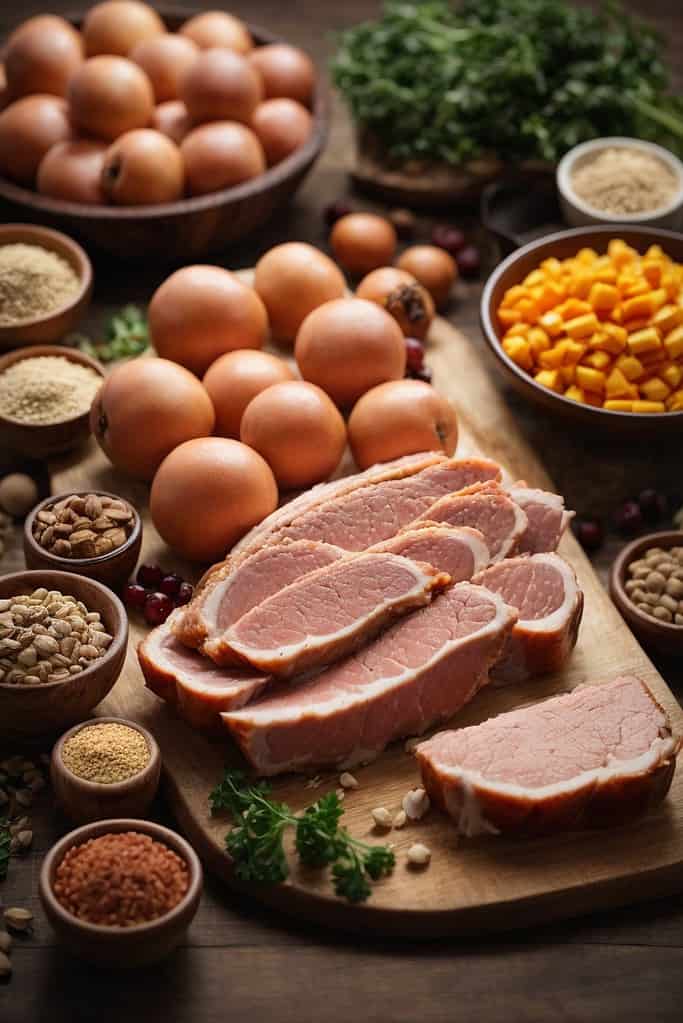
A popular variant is the pork butt or Boston butt, which, despite its name, comes from the upper part of the pig’s shoulder. It’s a fatty cut, hence perfect for making pulled pork. Even though it’s more calorific than leaner cuts, it’s still packed with proteins, vitamins, and minerals.
Despite the perception that pork is unhealthy, cuts like the pork tenderloin and pork loin chops are actually quite lean, comparable to skinless chicken breast. Preparation methods also influence the nutritional content—for instance, baked pork chops or grilled pork chops tend to be healthier than fried versions.
Health Benefits of Pork
Pork’s health benefits stem largely from its nutrient composition. Including pork in a balanced diet can bring about various benefits.
Heart Health: Contrary to popular belief, lean pork cuts, when part of a balanced diet, can contribute to heart health. They are low in sodium and a good source of monounsaturated fats— the heart-healthy fats.
Weight Management: High-protein foods like pork help in weight management by promoting feelings of fullness, which can reduce overall calorie intake.
Muscle Growth and Maintenance: As a quality source of protein, pork aids in muscle growth and maintenance. This makes it particularly beneficial for athletes, gym-goers, and older adults who need to prevent muscle mass loss.
Immune Function: Pork’s high zinc content contributes to a robust immune system.
To reap these health benefits, it’s important to make smart choices in selecting and preparing pork. Opt for lean cuts such as pork tenderloin or pork loin, and use healthier cooking methods, like roasting or grilling, instead of frying. You can find a variety of pork tenderloin recipes and pork loin recipes online that champion health without compromising on taste.
While pork offers several health benefits, moderation is key. Eating pork in excess, especially processed forms like pork sausage or bacon, can lead to health problems due to their high sodium and saturated fat content.
Pork, with its rich nutritional profile and numerous health benefits, is a welcome addition to a balanced, varied diet. Stay tuned as we venture further into the realm of pork in our upcoming sections, where we’ll explore the many culinary uses of pork, from barbecue to charcuterie, and delve into different meal types starring this versatile meat.
Exploring the Culinary Uses of Pork: From Barbecue to Charcuterie
Pork, the “other white meat”, as it is often referred to, has a place in the global culinary landscape that goes far beyond its ubiquitous presence on the barbecue grill. Its various cuts – from the tenderloin to the pork belly, and the versatile pork shoulder – lend themselves to a multitude of dishes, each unique in flavor and preparation style. These cuts are often central to traditional meals, offering a rich culinary exploration that traverses continents and cultures.
The Global Pork Panorama
As one steps into the global gastronomic arena, the culinary applications of pork are manifold. Pork’s journey starts right from the kitchens of the American South with pulled pork sandwiches, travels across the Pacific to Chinese sweet and sour pork, and finds its way to the spice-infused street food corners of Mexico with pork carnitas.
In the American South, pulled pork is a time-honored tradition, often slow-cooked on a barbecue until it reaches a stage where the meat can be easily “pulled” into individual strands. It’s usually served piled high on a soft roll and smothered in a tangy barbecue sauce, creating a dish that is comforting and satisfying. The perfect pulled pork recipe awaits your exploration.
Moving to the East, the Chinese have perfected the art of using pork in their dishes, with sweet and sour pork being a star attraction. Bite-sized pieces of pork loin or pork shoulder are seasoned, battered, and deep-fried until crisp, then doused in a vibrant sauce that marries tangy, sweet, and umami flavors seamlessly.
In the vibrant food landscape of Mexico, pork manifests itself as carnitas – a dish where pork butt or pork shoulder is slow-cooked until tender, then shredded and crisped up, typically served in a tortilla with a range of condiments and garnishes. Pork also features prominently in pork tacos, a staple street food dish that has found global popularity.
The Pork Chop in Various Guises
Among the most popular cuts of pork is the humble pork chop, a versatile piece of meat that lends itself to a plethora of recipes. Whether it’s baked pork chops, grilled pork chops, or the classic pan-fried pork chops, this cut remains a favourite in many households. A well-cooked pork chop can be a revelation, especially when it’s marinated properly to infuse flavor and cooked just right to retain juiciness. For a unique spin, try the sous vide pork chops, which guarantees a perfectly cooked, succulent chop every time.
Pork Belly: A Rich, Flavorful Delight
Another versatile cut is pork belly, prized for its tender meat and rich, layered fat that, when cooked right, can melt in your mouth. From the Korean Samgyeopsal, where it is often grilled at the table and served with a smorgasbord of accompaniments, to the Filipino Lechon, where it’s rolled and roasted until the skin turns into a crispy, delicious crackling – pork belly makes a rich and flavorful addition to any dish.
The Chinese have turned braised pork belly into an art form, where it’s slow-cooked in a mix of soy sauce, rice wine, and sugar until it turns a glossy, caramel brown. The result is a melt-in-your-mouth delicacy that is intensely flavorful and comforting.
Pork’s Charcuterie Charm
In the world of charcuterie, pork takes on an even more diverse role. From the smoky, spicy Spanish chorizo to the smooth, rich French pâté, pork proves to be a versatile ingredient in this artisanal craft. Pork’s ability to be transformed into cured, fermented, and smoked products such as prosciutto, salami, sausages, and terrines makes it a favorite choice in charcuterie boards around the world.
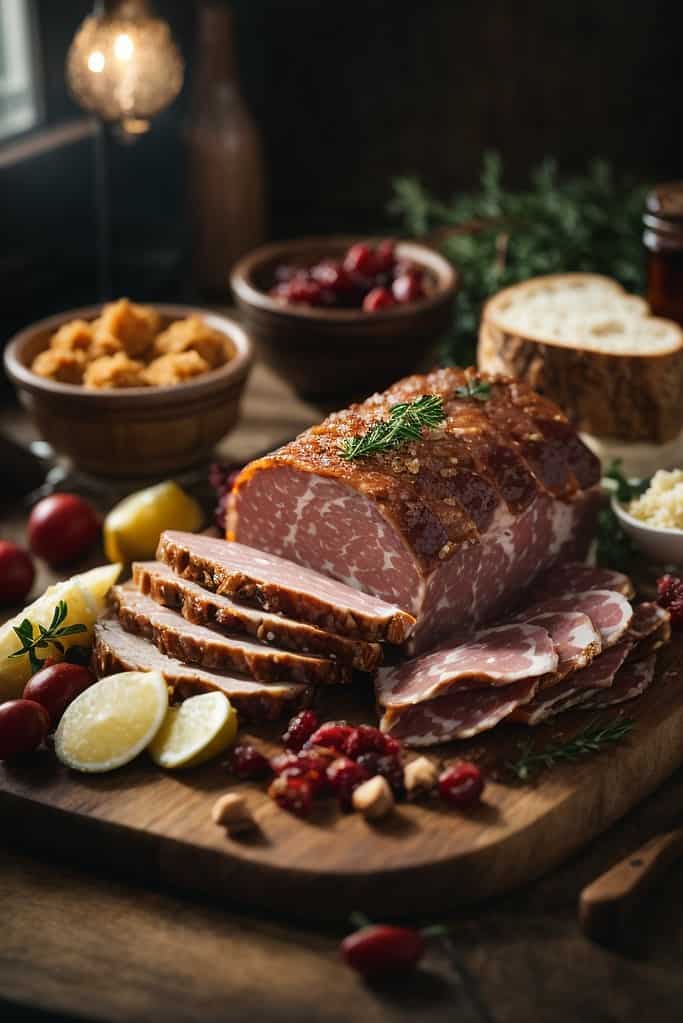
From pork loin chops boneless to the flavorful pork shoulder, from the humble pork chop to the decadent pork belly – every cut of pork brings something unique to the culinary table. It’s this versatility that makes pork a star in a variety of meal types – from casual barbecues to fine dining delicacies.
If you’re looking for a one-stop guide on all things pork, look no further. Our comprehensive resource will guide you on the history of pork, its nutritional profile, the different pork breeds, and even tips on selecting and storing pork for the best quality and longevity.
Whether it’s a simple, homely dish or an exotic, complex recipe, pork’s adaptability allows it to cater to a variety of palates and preferences. So next time you’re planning a meal, consider this versatile meat for a dish that’s sure to be a crowd-pleaser.
Did you know?
While pork is renowned globally for its culinary uses, it also has an intriguing place in culture and folklore. Stay tuned to our next section where we delve into the stories and symbolism that surround this beloved ingredient.
Pork: A Versatile Star in Different Meal Types
Imagine the succulent taste of a pork chop sizzling on your plate, or the comforting aroma of a pork roast emanating from your oven. Few ingredients can boast the versatility of pork, and fewer still can add such rich flavors to meals from dawn till dusk. This meat, cherished by cultures around the globe, shines bright from breakfast to dinner, satisfying the most discerning of palates.
Breakfast: The Day Starts with Pork
Awakening to the enticing aroma of pork sausage or pork belly is an experience that can be savored worldwide. In the UK, pork sausages form an integral part of the traditional “full English” breakfast. In the U.S., they are a staple alongside eggs and toast. The crisp, golden pork belly, meanwhile, is an essential component of a hearty breakfast in countries like South Korea. Pork offers a protein-packed start to the day, releasing energy slowly to keep you satiated until lunchtime.
Tip: For a twist on the traditional breakfast, why not try a pork loin chop, lightly seasoned and quickly pan-fried?
See here for some more breakfast pork recipe ideas.
Lunch: Middle-of-the-Day Delights
When it comes to lunch, pork-based dishes offer a variety of flavors and textures to explore. From China’s tantalizing sweet and sour pork to Mexico’s delicious pork carnitas, these midday pork specialties keep lunchtimes exciting. The American South, famed for its pulled pork, is a testament to the art of slow cooking pork to perfection. These tender, shredded morsels are a favorite sandwich filler, often slathered in tangy barbecue sauce.
Tip: Add some Asian flair to your lunch with a pork bun – soft, fluffy buns filled with sweet, saucy pork.
Discover our favorite lunchtime pork recipes here.
Dinner: Pork Steals the Spotlight
As the sun sets, pork continues to command attention, starring in dinner tables worldwide. Imagine savoring smothered pork chops, braised in a flavorful gravy, or a pork loin roast, its crackling exterior revealing tender, juicy meat beneath. Let’s not forget the pork belly, either roasted to crispy perfection or slow-cooked until it melts in your mouth.
In Japan, a bowl of pork ramen offers a comforting end to the day, while in Germany, a serving of pork schnitzel paired with sauerkraut and mashed potatoes is a hearty, classic dinner.
Tip: For an unforgettable dinner, try pork tacos, filled with succulent pulled pork, tangy salsa, and crunchy slaw.
Check out these delectable pork dinner recipes.
From its use in early morning meals to its starring role in dinners, pork truly is a versatile star. The rich, distinctive flavor of pork, coupled with its ability to pair well with a myriad of ingredients, is what makes it such a culinary delight. Whether pan-fried for a quick meal or slow-roasted for a special occasion, pork dishes offer endless variety and deliciousness.
As we continue to explore the world of pork in this series, we invite you to experiment with our recipes. See for yourself how this wonderful ingredient can transform your meals, and perhaps you’ll discover your new favorite dish!
Explore the Nutritional Profile of Pork
Selecting and Storing Pork: Tips for the Best Quality and Longevity
When it comes to selecting pork, whether for pork chop recipes or pulled pork, making a smart choice can significantly impact the taste of your dish. And once you have that prime cut, knowing how to store it effectively ensures you can savor its flavors at their peak. This guide will provide you with an in-depth understanding of how to select and store pork for the best quality and longevity.
Choosing the Best Pork
When walking into a butcher shop or supermarket, the array of pork cuts can be overwhelming. You’ll see everything from pork loin to pork belly, pork butt, and pork chops. So how do you make the right choice?
Understand the Cut
Every cut of pork has its characteristics and is suited for specific cooking methods. Pork tenderloin, for example, is lean and tender, perfect for quick-cooking methods like roasting or grilling. In contrast, pork shoulder or pork butt is best for slow cooking, given its high-fat content that renders down over time, making it ideal for a sumptuous pulled pork recipe.
Look at the Color
Color is an excellent indicator of the meat’s freshness. Fresh pork should have a blush pink color, while pork that is gray or brown should be avoided as it’s likely past its prime.
Examine the Fat
When choosing pork, do not shy away from fat. Fat equals flavor and moisture. Look for cuts that have a good amount of white, creamy fat marbling. For instance, a pork chop with a nice ring of fat around the edge and specks of marbling throughout will be far juicier and flavorful than a lean one.
Check for Firmness
The pork should feel firm to the touch, not soft or squishy. If it leaves an imprint when you press it, it may not be fresh.
Consider the Source
Knowing where your pork comes from can also influence your selection. Many chefs and food enthusiasts prefer Berkshire or Kurobuta pork, which is known for its richness, marbling, and hearty flavor.
Storing Pork Effectively
Once you’ve selected your perfect cut, storing it properly is essential to maintain its quality and extend its shelf life.
Refrigerating Fresh Pork
Fresh pork like pork loin chops or pork belly should be stored in the coldest part of your refrigerator (usually the bottom), where it can stay fresh for 3 to 5 days. Ensure it is well-wrapped in its original packaging or airtight containers/bags to prevent it from drying out.
Freezing Pork
If you don’t intend to use your pork within a few days, freezing is a good option. For pork tenderloin recipes or pork butt recipes, divide the meat into meal-sized portions before freezing. Wrap each piece tightly in a plastic wrap, then foil, and finally seal in a freezer bag. Pork can be frozen for up to 6 months without significant loss of quality.
Thawing Frozen Pork
When you’re ready to create your pork recipes, like smothered pork chops or instant pot pulled pork, thaw your meat in the refrigerator for 24 hours before cooking. This slow thawing process allows the meat to retain its moisture and ensures even cooking.
Storing Cooked Pork
Leftover pulled pork or pork roast should be cooled to room temperature, then transferred to airtight containers and refrigerated. Consume within 3-4 days for best flavor. Alternatively, you can freeze cooked pork for up to three months.

By understanding the intricacies of selecting and storing pork, you can ensure that every pork dish you prepare, from pork tacos to pork dumplings, is a culinary masterpiece. Stay tuned for the next part of this series where we’ll delve into mastering various pork cooking techniques. Until then, happy cooking!
Mastering Pork Cooking Techniques: From Braising to Grilling
When it comes to the world of gastronomy, pork is a versatile and loved ingredient, offering an array of culinary opportunities. From succulent pork chop recipes to crispy pork belly and tender pork tenderloin, the different cuts of pork each present a unique flavor profile and texture.
Traditional Pork Cooking Techniques
One of the oldest, yet still beloved methods of cooking pork is braising. This slow-cooking technique, best suited for tougher cuts like the pork shoulder or pork butt, involves searing the meat and then slowly cooking it in a small amount of liquid, often a flavorful broth or wine. This process tenderizes the meat and imbues it with deep, rich flavors. Think about a fork-tender pulled pork recipe, for example, where the low and slow cooking method melts away the collagen in the meat, resulting in mouth-watering, pull-apart pork.
Another traditional technique for preparing pork is roasting. Perfect for larger cuts like pork loin or a pork butt roast, roasting allows the meat’s exterior to caramelize and form a flavorful crust, while the inside cooks to juicy perfection. The key to a successful roast is the accurate use of temperature; understanding pork temperature during cooking ensures a juicy roast, whether you’re following a classic pork loin recipe or a simple pork roast recipe.
Don’t forget the long-established art of grilling pork. Whether you’re mastering your pork chop technique for a summer barbecue or trying your hand at grilled pork tenderloin, grilling provides an enticing smoky flavor that’s hard to resist. This technique also lends itself beautifully to marinated pork. A pork chop marinade or a pork tenderloin marinade, can transform your dish, helping to tenderize the meat and add layers of flavor.
Modern Twists on Pork Preparation
Fast forward to the present day, and we’re still creating innovative ways to prepare pork. Modern cooking techniques, like using an air fryer or a sous vide machine, have ushered in new ways to cook our beloved cuts of pork. Crispy air fryer pork chops or perfectly cooked sous vide pork chops are just a few examples of modern pork dishes that utilize these technologies.
An Instant Pot, the modern-day pressure cooker, has revolutionized the way we cook slow-cooked dishes. You can have instant pot pulled pork or a tender pork butt roast cooked in significantly less time than traditional methods.
Exploring Global Pork Preparations
In addition to traditional and modern techniques, exploring pork preparation from around the world can offer exciting new ways to savor this ingredient. From Chinese twice-cooked pork and sweet and sour pork, to Mexican pork carnitas and Filipino pork adobo, each culture has a unique approach to preparing pork that’s worth exploring.
Pork: Not Just For Main Courses
While pork is undoubtedly a star in main dishes, it can also shine in other meal types. It could be a crispy pork cutlet in a hearty sandwich, smoked pork belly burnt ends as a flavorful appetizer, or even pork rinds as a crunchy snack. The possibilities are endless when you start to explore the full range of pork’s versatility.
For a truly elevated pork experience, try pairing your dishes with complimentary spices, sauces, and side dishes. Pork’s natural flavor profile pairs well with a variety of ingredients. You’ll find tips for perfect pairings in the section “Perfect Partners: Pairing Pork with Spices, Sauces, and Side Dishes”.
As you delve further into the world of pork, consider exploring other articles in this guide, such as “Key Pork Recipes: Staples in Every Meat Lover’s Kitchen” or “Avoiding the Pitfalls: Common Mistakes When Preparing Pork”.
Whatever your preference may be, traditional or modern, main course or snack, there’s a world of pork preparation techniques waiting to be discovered. So, don your apron, get your cooking tools ready, and let’s continue our pork journey together.
Next in our guide, you’ll learn some key pork recipes that are staples in every meat lover’s kitchen. So stay tuned and get ready to take your pork cooking skills to a whole new level.
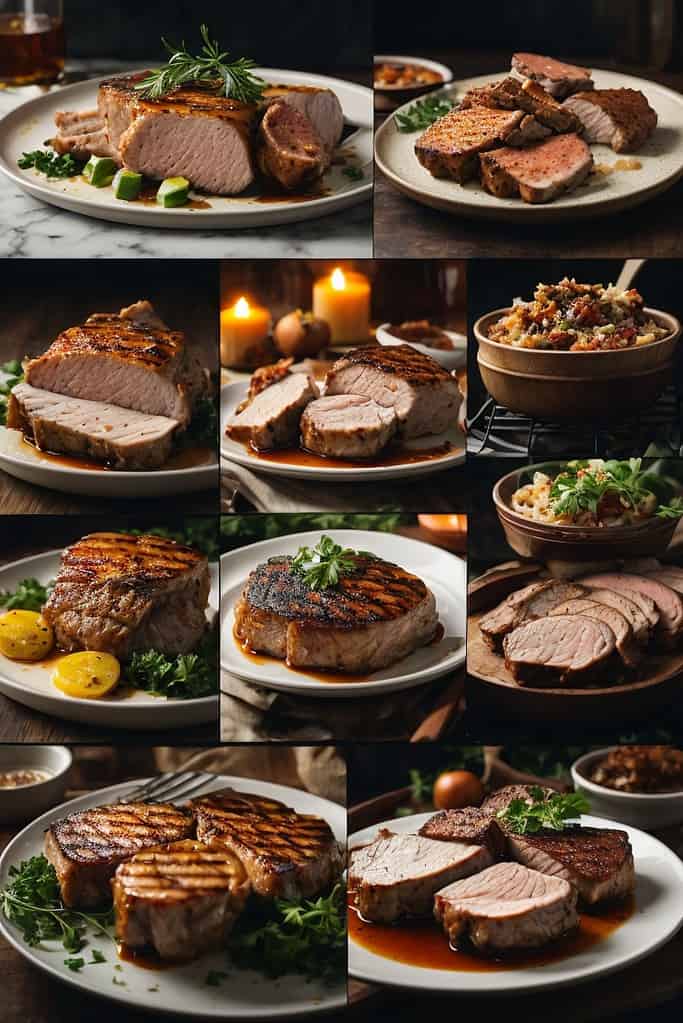
Key Pork Recipes: Staples in Every Meat Lover’s Kitchen
Pork: it’s not just the “other white meat.” It’s an ingredient that spans cultures, continents, and cuisines, from the juicy pork chops sizzling on a summer grill in the Midwest, to a steaming bowl of pork ramen in the heart of Tokyo. This versatile protein plays a starring role in some of the world’s most iconic dishes. In this section, we’ll delve into key pork recipes that exemplify the full range of this ingredient’s potential.
The Classic Pork Chop
Any discussion about pork would be incomplete without a tribute to the classic pork chop. When prepared well, it can be a juicy, tender, and flavorful centerpiece to any meal. One of the most sought-after recipes is the oven-baked pork chop, a hearty meal that fills your kitchen with mouthwatering aromas. Its preparation often includes a savory marinade, a testament to how the right flavors can elevate the humble pork chop to gourmet status.
How to cook pork chops in the oven is a common query for many home cooks, given the fear of overcooking and resulting dryness. It’s a delicate balance, and the key is to sear them first on the stove before finishing in the oven. A suggested pairing for this main course is a robust, tangy side dish, such as apple coleslaw or caramelized Brussels sprouts.
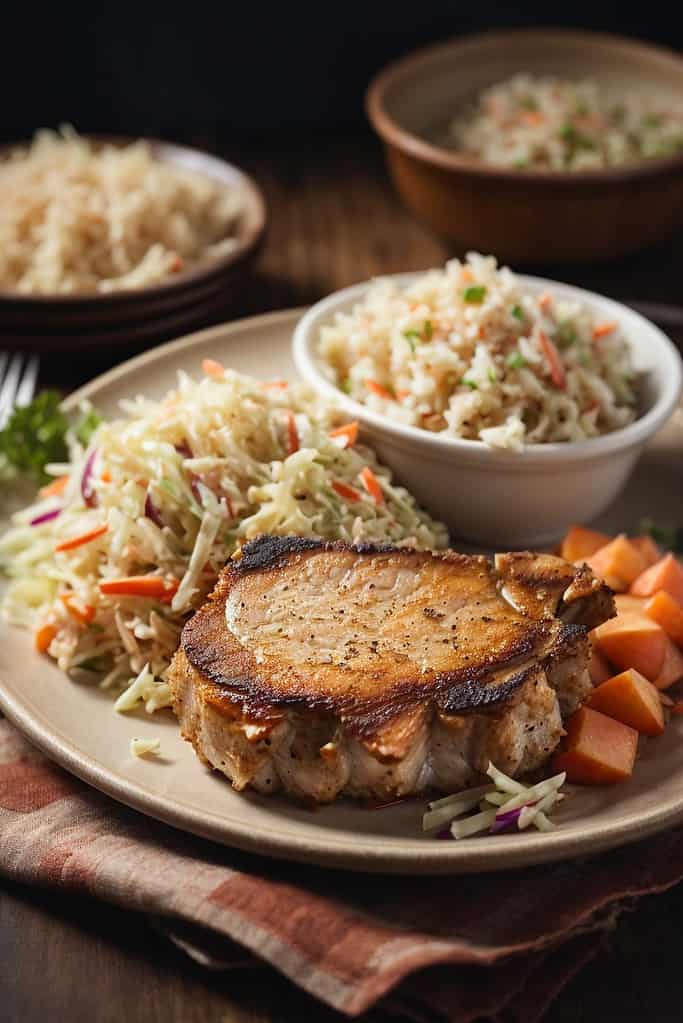
Pulled Pork: An American Barbecue Staple
The pulled pork sandwich is an American classic, known for its tender, succulent meat, flavored with a smoky barbecue sauce and served on a soft bun. It’s a staple of Southern cuisine, often using a pork shoulder or pork butt that’s slow-cooked until it’s falling apart. Techniques can vary, from traditional smoking to utilizing modern kitchen gadgets like the instant pot pulled pork recipe that’s popular among home cooks.
While the sandwich might be the most common way to enjoy pulled pork, it’s versatile. One can use it as a filling for tacos, enchiladas, or even stirred into macaroni and cheese for a decadent twist.

The Crispy Delight of Pork Belly
Moving to East Asia, pork belly reigns supreme. It’s the star of many dishes, thanks to its layers of lean meat and melt-in-your-mouth fat. From the Korean Samgyeopsal to Chinese red-braised pork belly, these dishes feature a succulent piece of pork belly that’s often slow-cooked to allow the flavors to penetrate the meat.
If you’re a fan of crispness, you might want to try crispy pork belly, a dish where the meat is succulent and tender, and the skin is crackling and crispy. This balance makes it a favorite in many cuisines, notably in Chinese and Filipino cooking, where it’s known as Lechon Kawali.
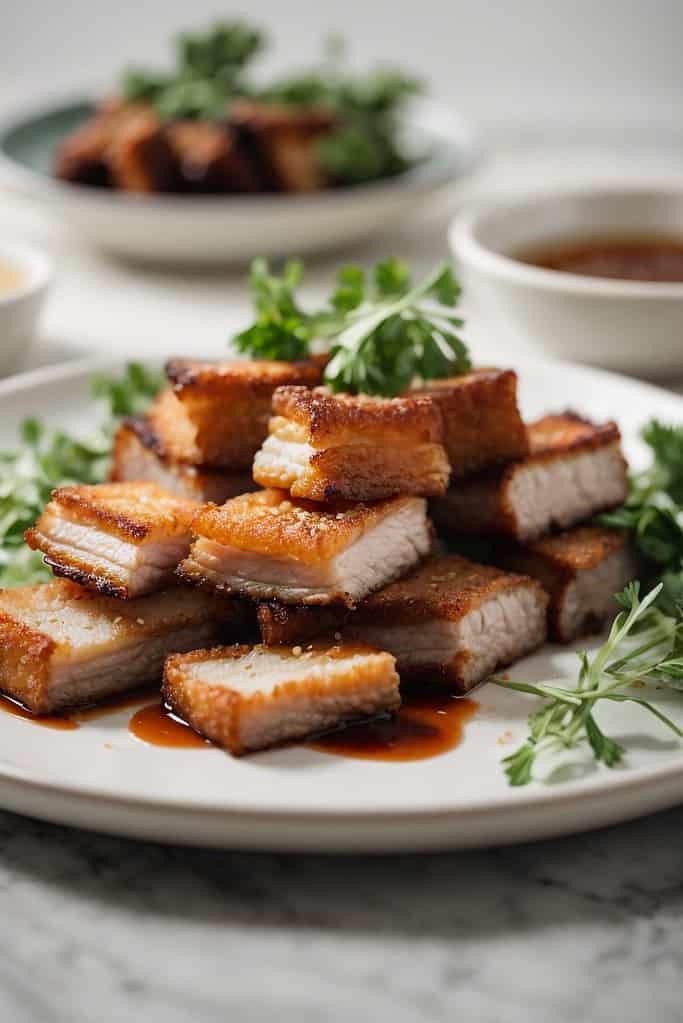
Versatile Ground Pork
Ground pork often plays second fiddle to its beef and chicken counterparts, but it’s a versatile ingredient that can enhance any dish. It can be transformed into hearty meatballs, spiced for a flavorful pork stir fry, or even mixed with other ingredients for a filling in dumplings or lettuce wraps. Ground pork truly excels in dishes like Ma Po Tofu, a renowned Chinese dish that embodies the impeccable fusion of spicy, savory, and slightly sweet flavors.
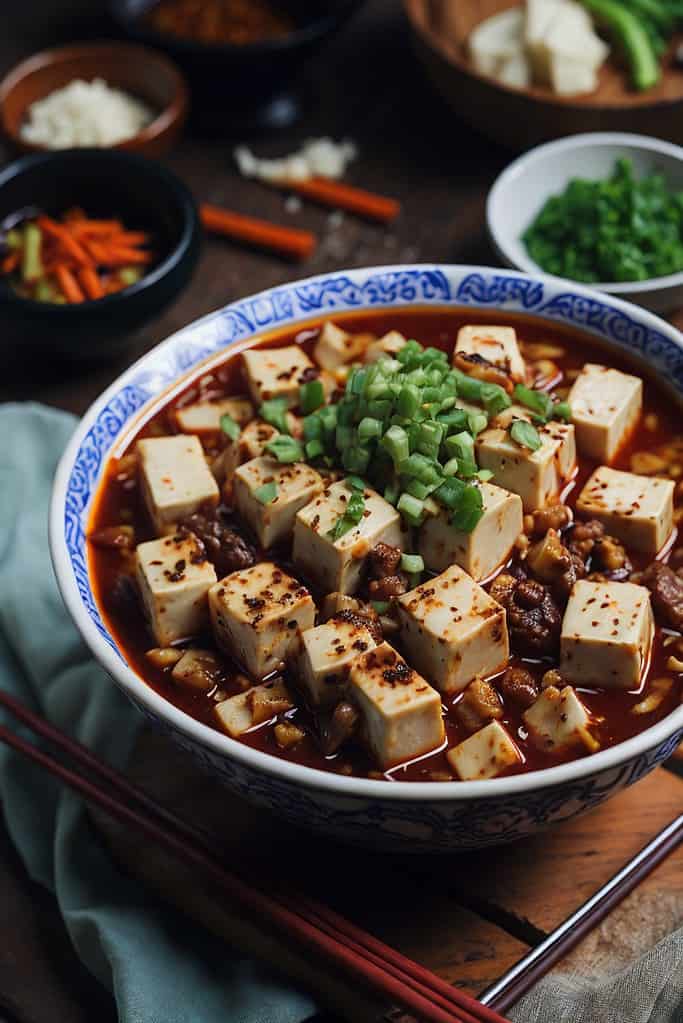
Pro tip: Remember, the key to perfect pork is understanding your cut, the right cooking method for it, and patience. Cooking pork is an art and requires time, especially for recipes that call for slow cooking. However, with practice, you’ll find that perfect balance, producing juicy, flavorful pork every time.
Perfect Partners: Pairing Pork with Spices, Sauces, and Side Dishes
When it comes to the world of culinary creations, pork holds a venerable position due to its versatility and wide-ranging flavor profile. Whether it’s the smoky, juicy delight of pulled pork, the tender sweetness of a well-cooked pork tenderloin, or the tantalizing crunch of pork rinds, there’s a pork dish to tantalize every taste bud.
But a truly great pork meal is not merely about the meat itself; it’s about the harmonious partnership of pork with the right spices, sauces, and side dishes.
Spice It Up: The Magic of Well-Seasoned Pork
“The only real stumbling block is fear of failure. In cooking, you’ve got to have a what-the-hell attitude.” – Julia Child
This quote by the celebrated chef Julia Child perfectly captures the bold spirit of culinary experimentation that is essential when it comes to seasoning pork. One of the most effective ways to add a burst of flavor to pork dishes is through a creative blend of spices.
If you’re looking for a traditional approach, consider a mix of garlic, sage, and rosemary for your pork loin. For fans of spice and heat, cumin and chili powder add a tantalizing kick to pulled pork recipes. Seeking an Asian twist? The five-spice blend, a mixture of star anise, cloves, Chinese cinnamon, Sichuan pepper, and fennel seeds, can provide a unique flavor punch to pork belly dishes.
Why not create a DIY spice rub for your pork chops? The enticing blend of brown sugar, smoked paprika, and black pepper is an ideal pairing for pork chop recipes. This perfect marriage of sweet and spicy is guaranteed to elevate your grilled or baked pork chops to the next level.
The Saucy Side of Pork
Adding the right sauce can transform a good pork dish into an extraordinary one. If you’re working with pork tenderloin, consider pairing it with a tangy apple cider sauce. The sweetness of the apples melds beautifully with the richness of the pork. For pork chops, why not try a creamy mushroom sauce or a fresh herb vinaigrette? These sauces add depth and character to the dish without overpowering the star ingredient: the pork.
For those who enjoy the sweet and savory combination, a honey mustard glaze can be a divine pairing with pork tenderloin recipes. BBQ lovers might enjoy a traditional barbecue sauce with their pulled pork sandwiches, while a pork loin roast would sing with a red wine reduction sauce.
Side Dishes: Perfect Complements for Your Pork Dish
When it comes to side dishes, pork offers ample room for creativity. An elegantly prepared pork loin goes well with roasted vegetables, while mashed potatoes with a hint of garlic would make an excellent companion for pork chops.
Pork belly often pairs well with pickled vegetables, cutting through the richness of the meat with their acidity and crunch. Light salads with vinaigrette dressings, or even tangy slaws, can be a refreshing accompaniment to heavy pork shoulder dishes or pulled pork.
If you’re whipping up a pork fried rice or a pork stir-fry, consider serving it with a side of crispy spring rolls or dumplings. The possibilities are endless!
Wrapping Up the Tenth Item on the Ingredient Outline: Perfect Partners for Pork
Pork is a flavorful canvas ready to be painted with a spectrum of spices, sauces, and sides. By understanding and exploring these pairings, you can elevate your pork dishes and create a memorable culinary experience.
Whether you’re cooking a casual weeknight dinner or planning a festive holiday feast, remember that the perfect partners for your pork can make all the difference. So, don’t hold back – experiment with flavors, push the boundaries, and most importantly, enjoy the journey!
In the next part of our series, we’ll delve into the unexpected health benefits of pork. Stay tuned!
“Pork… no animal is more used for nourishment and none more indispensable in the kitchen.” – Alexis Soyer
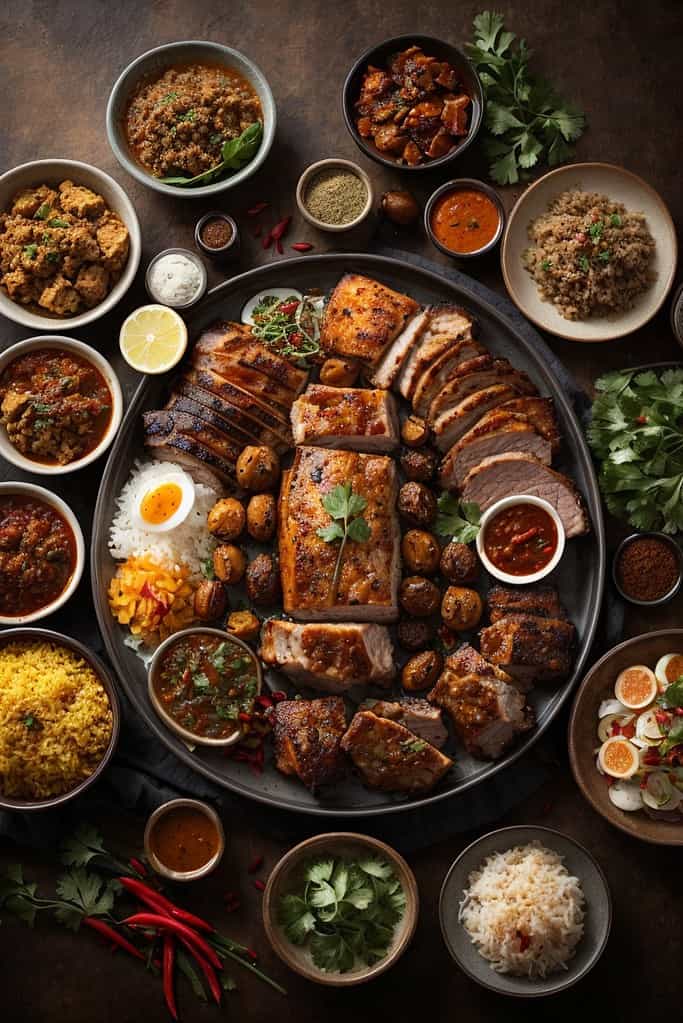
The Unexpected Health Benefits of Pork: From Protein to Micronutrients
While it’s widely known that pork is a delicious component of a multitude of dishes, from pork tenderloin recipes to pulled pork sandwiches, it’s less commonly recognized that this meat also boasts some surprising health benefits. Beyond its popular image as a delectable delight for your taste buds, this versatile meat harbors a myriad of nutrients that are essential for human health. Let’s dig a bit deeper into the beneficial aspects of pork.
Not Just Another Meat: Pork’s Nutritional Powerhouse
Contrary to popular belief, pork is not merely a source of protein. It’s a comprehensive package of vital nutrients including vitamins, minerals, and high-quality protein. The nutritional value is not restricted to certain cuts either; whether it’s a pork shoulder roast or a slice of smoked pork butt, each cut of pork delivers a beneficial health profile.
For example, a simple pork chop recipe can provide a significant portion of your daily protein needs. Protein, an essential nutrient, plays a key role in building and repairing tissues and producing enzymes and hormones. Regular consumption of protein-rich foods like pork helps in muscle growth and aids weight management by promoting feelings of fullness.
Additionally, pork cuts like pork loin chops are an excellent source of vitamins and minerals such as Vitamin B6, thiamine, phosphorus, niacin, and selenium. Thiamine, also known as Vitamin B1, is particularly abundant in pork and plays a critical role in energy metabolism and nerve function.
Unlocking the Medicinal Uses of Pork
Though we may not think of a pork butt recipe when considering food with medicinal qualities, pork has long been utilized in traditional medicine practices. In the realm of modern scientific research, several studies have shed light on potential medicinal uses of pork.
Healthy Fat Composition
Pork contains a higher amount of unsaturated fats compared to other meats, notably pork belly and pork ribs. Unsaturated fats, especially monounsaturated fats, can help improve your blood cholesterol levels, reducing your risk of heart disease.
An Ally in Anemia Prevention
The iron found in pork is in heme form, which is more readily absorbed by the body compared to non-heme iron found in plant foods. Iron is essential for the production of hemoglobin, a protein that helps red blood cells deliver oxygen throughout the body. Regular consumption of iron-rich foods like pork can help prevent iron-deficiency anemia.
Supporting Immune System
Pork is rich in zinc, a mineral that boosts the immune system, supports wound healing, and aids in the breakdown of carbohydrates. A dish like pulled pork, made from pork butt, can help meet your daily zinc needs.
Eye Health
Pork is a good source of lutein and zeaxanthin, two antioxidants that are known to help protect the eyes and prevent macular degeneration, a leading cause of vision loss in older adults.
Exploring the Healthier Side of Pork: Recipes to Try
Incorporating pork in a balanced and nutritious way can be as simple as exploring new pork chop recipes or adding a twist to your traditional pork loin recipes. Remember, the way pork is prepared can also significantly impact its health benefits. Choosing lean cuts, reducing added fats, and opting for healthier cooking methods like roasting, grilling, or baking can help you enjoy pork’s medicinal benefits while maintaining a balanced diet.
Let’s not forget instant pot pulled pork, smoked pork chops, or pork tacos, all are excellent examples of pork recipes that offer both flavor and health benefits.
While science continues to uncover more about the nutritional nuances of pork, it’s clear that this meat is more than just a culinary treat. So the next time you’re enjoying a pork loin roast or a pork belly recipe, remember you’re not just savoring flavor, but also reaping some unexpected health benefits.
Pork in Culture and Folklore: An Ingredient with a Story
In every corner of the world, pork serves as an important culinary staple and cultural symbol. The way it’s prepared and enjoyed, whether it’s through a cherished pork chop recipe or a family tradition of slow-roasting pork belly, varies widely from culture to culture. Pork’s rich tapestry of uses has even permeated folklore and symbolism, illustrating its powerful influence across continents.
The Pig as a Symbol
In many cultures, the pig, the source of all pork products from pork loin to pork rinds, is a symbol of prosperity and good fortune. For example, in Chinese culture, the pig is considered a sign of wealth and abundance. It’s no surprise then that China is one of the largest consumers of pork in the world. Every New Year’s celebration often involves dishes like sweet and sour pork or twice-cooked pork, hoping to bring good luck in the coming year.
On the other hand, in some cultures, the pig has negative connotations, seen as an unclean animal. For example, in the Jewish and Muslim faiths, consuming pork is prohibited based on religious dietary laws.
Pork’s Place in History and Legislation
Pork has even left its mark on legislation. The term “pork barrel legislation” in U.S. politics refers to the practice of allocating government spending for localized projects, often to bring favor with constituents. While it doesn’t directly relate to the meat, the term harks back to a time when pork, and specifically salt pork, was a valuable commodity.
Regional Favorites: A World of Pork
There’s a wide world of pork recipes to explore, each revealing something about the culture it comes from. In the American South, pulled pork and pork ribs reign supreme at barbecues and family gatherings. Slow-cooked until it’s fall-off-the-bone tender, these dishes are a testament to the patience and skill of Southern cooks.
Across the Pacific, Kalua pork is a staple of Hawaiian luaus, where a whole pig is traditionally cooked in a sand pit for several hours. This method of cooking imparts a smoky flavor that’s characteristic of this island favorite.
Head over to East Asia and you’ll find pork buns, a beloved comfort food. Whether it’s the steamed buns from China or the pan-fried pork buns of Japan, these tasty treats perfectly showcase the versatility of pork.
In the Philippines, pork adobo, a dish where pork is marinated and braised in a mixture of soy sauce, vinegar, and spices, is considered a national dish. This dish, like many others in the country, reflects the Philippines’ history of trade and colonization, mixing local ingredients with Spanish cooking techniques.
Pork’s Influence on Fashion
Even in the world of fashion, pork has made a surprising impact. The pork pie hat, named for its resemblance to a pork pie, became a fashionable accessory in the mid-19th century and enjoyed a resurgence in popularity thanks to the television series Breaking Bad.
Pork: A Unifying Ingredient
Despite the varied ways pork is perceived and consumed around the world, it remains a unifying ingredient. From family pork chop recipes passed down generations, the camaraderie at a barbecue featuring succulent pulled pork, to the comforting warmth of a pork dumpling, pork transcends borders and cultures.
Its versatile nature, whether it’s the tender pork tenderloin, flavorful pork shoulder, or rich pork belly, allows it to take center stage in countless dishes. Each dish tells a story, offering a glimpse into the cultures, histories, and traditions that have shaped our relationship with this beloved ingredient.
The next time you savor a pork chop or relish a bite of crispy pork belly, remember the rich cultural and historical tapestry behind every bite. It’s not just a meal, but a journey into a world of flavors, traditions, and stories waiting to be explored.
DIY Guide: From Farm to Table – Raising and Butchering Your Own Pork
Step onto any farm across the globe and you’ll likely encounter a snuffling symphony of snorts – the unmistakable anthem of pigs, creatures as lovable as they are delicious. Pigs, or specifically pork, play a crucial role in culinary traditions worldwide. But their journey from farm to table is not often explored by the average home cook. Today, we invite you to delve into the captivating world of raising and preparing your own pork.
Raising Your Own Pork: A Labor of Love
While raising your own pork may sound like an intimidating venture, it’s a process that’s filled with enriching experiences and, of course, delicious rewards. But let’s set the table first with an important consideration: breeds. Different pig breeds, much like the myriad varieties of pork chops or pork loin, come with their distinct characteristics. Whether you choose Yorkshire, known for its lean meat, or Duroc, admired for its superior marbling, your choice will ultimately dictate the flavor profile of your homegrown pork.
When it comes to feeding, balance is key. Pigs have a diverse diet, but one component reigns supreme – protein. This crucial nutrient aids in their growth and contributes to the quality of the meat.
In terms of housing, pigs require a simple setup: a dry, clean, and shaded area for rest and a larger space for rooting and roaming.
Butchering: The Art of Precision
With the respect and gratitude characteristic of a true farmer, it’s time to transition your livestock from barnyard to butcher block. Butchering your own pork provides control over cuts and quality, allowing for the perfect pork chop recipe or melt-in-your-mouth pulled pork.
But first, you’ll need a sharp, reliable butcher’s knife. Butchering is an exercise in anatomy as much as it is in cooking. Understanding the structure of the pig will guide your knife to the desired cuts, such as the pork butt, pork loin, or pork belly.
The process of butchering may seem like a daunting task, but once you’ve separated your desired cuts, they can be transformed into countless mouthwatering recipes. Crispy pork belly recipes, succulent pork tenderloin recipes, and of course, classic baked pork chops are now within your grasp.
From Butcher to Chef: Cooking Your Pork
Before you tie your apron and preheat your oven, let’s pause to appreciate a less explored facet of pork – its nutritional profile. Beyond its robust flavor, pork packs an impressive punch of protein and essential vitamins, making it a welcome addition to any balanced diet.
When it comes to cooking pork, the sky is truly the limit. Transform your pork loin roast into a succulent main dish with the help of your Instant Pot or try your hand at slow-cooked pulled pork for a comforting and hearty meal. Air fryer pork chops offer a healthier alternative to traditional frying without compromising on taste, while ground pork recipes open up a realm of possibilities, from meatballs to dumplings.
The beauty of pork lies not only in its versatility but also in its ability to play well with a symphony of flavors. Experiment with different pork marinades, create your own pork rubs, or pair your dish with tangy barbecue sauces and fresh, vibrant sides.
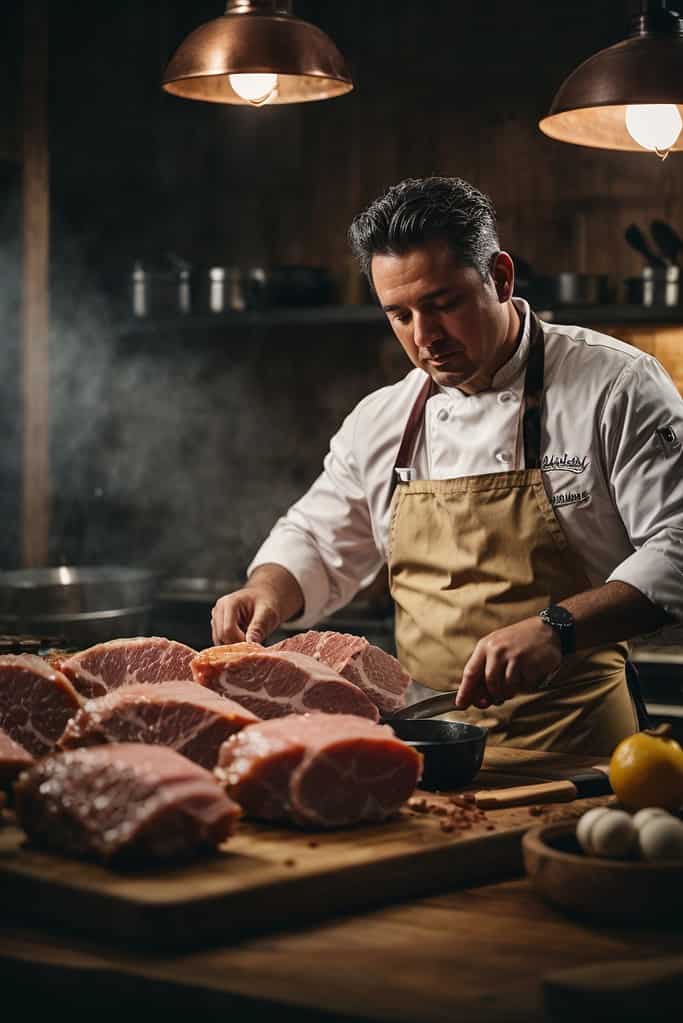
This guide is just the beginning of your culinary journey with pork. As you master the art of raising, butchering, and cooking pork, you will not only deepen your understanding of this versatile meat but also elevate your cooking to new, delicious heights.
Note: Remember to adhere to all safety and ethical guidelines when raising and butchering animals. Seek professional guidance if necessary.
Takeaway Tip: No matter the recipe – whether it’s smoked pork butt or instant pot pork loin – the key to exceptional pork lies in the quality of the meat. Raising your own pork provides an unparalleled opportunity to control that quality, from feed to butcher.
Seeking Substitutes: Alternatives for Pork in Diverse Recipes
While pork stands out as a prime player in many traditional recipes – think sweet and sour pork, pulled pork, or smoked pork butt, sometimes we need to explore alternatives. For health reasons, dietary restrictions, or just to try something new, the culinary world is teeming with potential substitutes. In this section, we delve into different alternatives for pork and how to best incorporate them into your favorite recipes.
Beef: A Robust Substitute for Pork
In many instances, beef can be a suitable substitute for pork. It is widely available and can mirror the texture and richness of pork, especially when considering cuts like pork shoulder or pork butt. A beef roast can replicate a pork roast with similar cooking methods like braising or slow-roasting.
Beef also stands out in ground meat recipes. Swapping ground pork for ground beef in recipes like pork dumplings or pork fried rice can create a unique spin without losing the integrity of the dish. However, do expect a more robust flavor, especially if using higher fat content beef.
Poultry: A Lighter Approach
When a lighter touch is needed, poultry, specifically chicken and turkey, can save the day. In recipes such as pork stir fry, chicken’s mild flavor and lower fat content can offer a healthier alternative without sacrificing satisfaction. Also, pulled chicken can replace pulled pork in a pulled pork sandwich, providing a lower-fat option without skimping on taste.
Turkey, with its slightly stronger flavor than chicken, works well in recipes requiring ground pork. It provides a wholesome, lean choice in dishes like pork sausage or pork tacos.
Plant-Based Alternatives: Perfect for the Plant-Forward Palate
For vegetarians, vegans, or anyone embracing a more plant-forward diet, a variety of plant-based options can stand in for pork.
Jackfruit, with its uncanny ability to mimic the texture of pulled pork, has surged in popularity. Prepare it with your favorite barbecue sauce, and you might just find yourself in disbelief at how close your jackfruit pulled pork is to the real deal.
For a crispy substitute for pork rinds, try roasted chickpeas or kale chips. They offer that same satisfying crunch with the added benefits of fiber and nutrients.
In recipes requiring pork sausage, try plant-based sausages made from tofu or seitan. With the right blend of spices, you might be surprised at the flavor resemblance.
Textural Tidbits and Flavor Factors
When substituting pork in a recipe, be aware of how it might alter the texture and flavor. Beef and poultry might have a similar mouthfeel to pork, but their flavors can differ. Beef tends to be richer and more robust, while poultry offers a lighter, subtler taste.
Plant-based alternatives, on the other hand, can sometimes struggle to replicate the unique texture of pork. However, with the right preparation methods and a little bit of culinary creativity, they can come close and deliver delightful flavors.
And, remember, when it comes to mimicking the taste of pork, the key is in the seasonings. Often, it’s the combination of spices that give dishes their distinctive profiles, more than the meat itself.
Before we proceed to the next topic on essential tools and gadgets for cooking pork, here’s a mini takeaway. Substituting pork in a recipe can provide a fresh twist, accommodate dietary needs, or serve as a solution when pork is not readily available. While the substitutes may not perfectly mirror pork in flavor and texture, they often bring their unique qualities to the table, making each dish a delicious adventure in its own right.
Essential Tools and Gadgets for Cooking Pork: Your Kitchen Checklist
The kitchen, often regarded as the heart of the home, comes to life when it’s time to prepare a meal. When it comes to handling pork, a protein as diverse as pork chops or as delicate as pork tenderloin, having the right tools and gadgets at your disposal can significantly enhance the cooking process. If you’re a lover of pork belly, a fan of pulled pork, or if your mouth waters at the thought of baked pork chops, the perfect kitchen equipment can transform your pork preparation from a daunting task to a delightful journey.
Meat Thermometer
Perhaps one of the most important tools in ensuring your pork roast or pork chop recipes come out just right is a meat thermometer. In the delicate dance of cooking, knowing the internal temperature of your meat can mean the difference between a perfectly cooked pork tenderloin recipe and an overcooked pork loin. It’s also invaluable when working with cuts like pork butt or pork shoulder that often require longer cooking times at lower temperatures.
High-Quality Knife Set
A high-quality knife set is a must-have for any home cook. From trimming excess fat off pork chops to slicing through the crispy crust of pork rinds, the right knife can make the process smoother. And, of course, when you’re ready to serve your pork loin recipes, a sharp carving knife ensures clean, even slices.
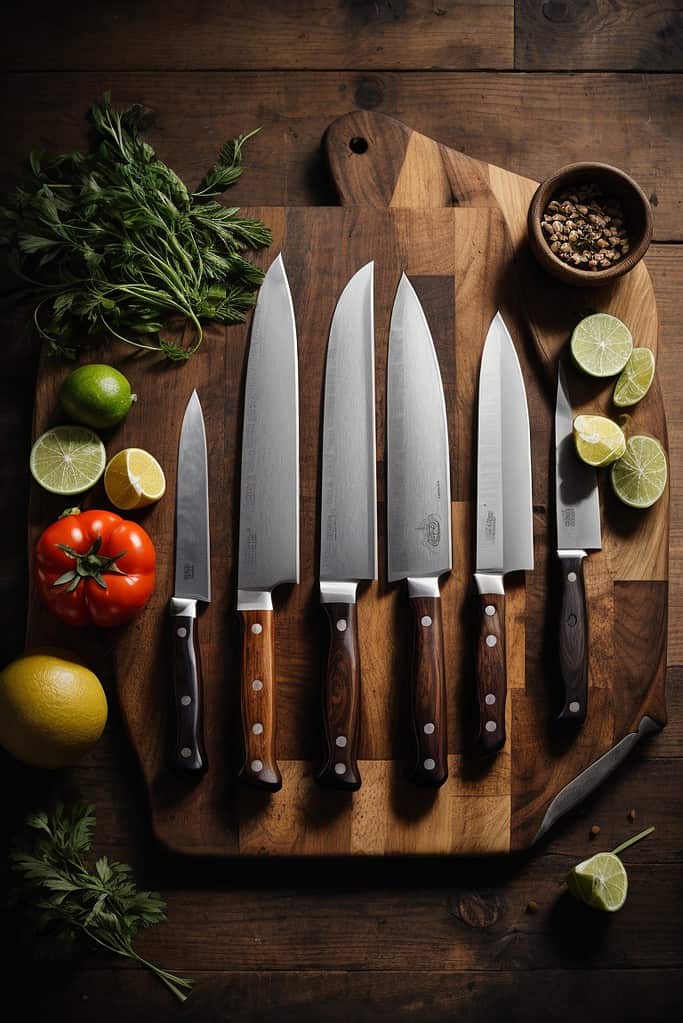
Slow Cooker
Whether you’re following a classic pulled pork recipe or venturing into a new pork belly recipe, a slow cooker is a valuable tool. It allows you to maintain a consistent, low temperature over a long period, essential for recipes such as slow cooker pulled pork or pork butt recipes. It can also be used for instant pot pulled pork, opening up a world of flavor and texture possibilities.
Instant Pot
The Instant Pot, a combination of a pressure cooker and slow cooker, is a versatile kitchen gadget for pork recipes. Ideal for making instant pot pork tenderloin, it can also cook a pork roast in less time than traditional methods. Plus, it’s a great option if you want to try out a pork chop recipe or experiment with smoked pork butt.
Grill
Few can resist the sizzling sound and enticing smell of pork chops on a grill. Whether you’re grilling pork loin chops boneless or enjoying the summer with some grilled pork chops, a good quality grill is a worthwhile investment for any pork lover.
Cast Iron Skillet
A cast-iron skillet is a versatile kitchen essential for cooking pork. From fried pork chops to pork steak, a well-seasoned cast-iron skillet can sear your pork to perfection. This skillet can also go from stovetop to oven, making it perfect for dishes like pork loin recipe or pork tenderloin recipes.
A Solid Cutting Board
Don’t underestimate the importance of a sturdy cutting board. It’s crucial when handling raw meat like pork. Whether you’re preparing ground pork recipes or pork loin roast, a good cutting board will protect your countertops and knives, and it provides a safe and sanitary surface for food preparation.
Finally, remember to keep your tools clean and well-maintained. Not only does it ensure their longevity, but it also safeguards against potential foodborne illnesses that can occur when working with raw meats such as pork.
In conclusion, with these essential kitchen tools and gadgets, you’ll be well-prepared to handle and cook a variety of pork cuts and recipes. Whether it’s pork chop recipes, a succulent pork belly, or a tender pulled pork, having the right tools in your culinary arsenal can turn the daunting into a delightful culinary journey. Remember, good tools are an extension of your hands and can elevate your cooking experience.
Pro tip: For additional knowledge on handling pork, take a look at our articles on Mastering Pork Cooking Techniques and Selecting and Storing Pork. Happy cooking!
Avoiding the Pitfalls: Common Mistakes When Preparing Pork
Few culinary delights rival the aromatic allure of perfectly cooked pork. Be it the smoky fragrance of a grilled pork chop or the tantalizing aroma of slow cooker pulled pork, this versatile meat has an honored place in the heart of many gourmets. But despite its familiarity, it’s easy to err when preparing pork, resulting in less-than-stellar outcomes. Let’s embark on a journey to explore some common mistakes and offer expert advice on how to avoid them. This knowledge can significantly improve your pork recipes and help you understand how to cook pork chops or how to cook pork tenderloin with ease and confidence.
Overcooking: The Cardinal Sin of Pork Preparation
Back in the day, it was common practice to cook pork until it reached well-done status, which often led to dry, tough meat. This practice was based on the fear of trichinosis, a parasite often found in pork. However, with modern farming practices, trichinosis has become extremely rare. Today, cooking pork to a safe internal temperature of 145°F (63°C), as recommended by the USDA, yields a juicy, slightly pink center. This perfect balance can be achieved with the help of a meat thermometer, an invaluable tool for any pork-loving cook.
Take your pork loin recipe or pork chop recipe to the next level by remembering this tip: resist the urge to overcook. Remember, your pork butt roast or pork loin roast will continue to cook after being removed from the heat, so factor in carry-over cooking.
Improper Seasoning: The Flavour Faux Pas
A well-seasoned piece of pork is a thing of beauty. But many make the mistake of being too timid with their seasoning, especially with pork cuts like pork shoulder and pork butt, which are robust and can handle a liberal sprinkling of spices and herbs.
Whether you’re whipping up a pork belly recipe or creating an instant pot pulled pork, don’t shy away from enhancing the natural flavor of the meat. Try marinating your pork chop or pork loin for a few hours before cooking to infuse it with flavor. Make sure to season your pork well before it hits the heat, and don’t forget a good sprinkle of salt and pepper just before serving.
Rushing the Resting Time: Patience is a Virtue
After achieving the perfect pork temperature, many cooks, enticed by the delicious smell, cut into their pork roast or pork steak too soon. This mistake causes the tasty juices to flow out, leaving you with a dry, less-flavorful cut. Whether you’re preparing fried pork chops or a pork tenderloin marinade, always allow your meat to rest for at least 5-10 minutes before slicing to ensure it remains moist and flavorful.
Skimping on Quality: The Price of Taste
If you’re on a quest to create the best pork chop recipes or want to impress with a pork tenderloin recipe, don’t skimp on the quality of your pork. Lower-quality pork often contains added water and phosphates, resulting in a less flavorful, rubbery texture when cooked.
Invest in good-quality, preferably locally sourced pork. Although you might pay a premium for pork ribs or pork loin chops, the difference in flavor and texture will make it worth your while.
A mini takeaway from our journey into common pork mistakes: By avoiding overcooking, improving seasoning, being patient with resting time, and choosing quality pork, you can elevate your pork recipes. Stay tuned for our next sections where we’ll explore pork pairings, discover the unexpected health benefits of pork, and delve into the cultural significance of this versatile meat.
Explore other sections for in-depth knowledge on pork. From instant pot pork tenderloin to pork stir fry, and from pork adobo to slow cooker pork chops, there’s so much more to learn.
Test Your Pork Knowledge: Interactive Quiz
In our deep dive into the world of pork, we’ve traveled from its domestication history to its culinary uses, nutritional profile, and cultural significance. We’ve even talked about various pork recipes, right from pork chop recipes to pork belly recipes and pork loin recipes.
Now, it’s time to test your knowledge! This interactive quiz will challenge your understanding of pork, its preparation, and the diverse ways it can be enjoyed. Ready? Let’s go!
After taking this quiz, do you feel like you’re a pork expert or just a pulled pork enthusiast? Regardless of your score, remember that every pitfall is a stepping stone to mastery. From smoked pork butt to the best pork chop recipe, every cooking journey has its lessons.
Before moving on, let’s talk about a few tips that will help you improve your pork cooking skills.
Pork Cooking Tips
- Pork Selection: Pay attention to the cut of pork you choose. For instance, a pork tenderloin is perfect for a quick, tender meal, while a pork butt or pork shoulder is ideal for slow-cooked dishes like pulled pork.
- Cooking Technique: Matching the cooking technique to the cut is essential. Whether you’re grilling pork chops or sous vide-ing a pork belly, ensure you use a method that brings out the best in the meat.
- Resting Time: Let your cooked pork rest before cutting into it. This allows the juices to redistribute throughout the meat, ensuring a moist and flavorful bite.
- Temperature Check: Use a meat thermometer to check the doneness of your pork. It’s the most reliable way to ensure your pork is safely cooked.
These tips should help you cook up a storm, whether you’re making instant pot pulled pork or experimenting with pork loin recipes.
Now, head on over to our Community Kitchen section to discover favorite pork recipes from our readers or revisit our article on key pork recipes for more inspiration. Don’t forget to check out our infographics on pork nutrition and cooking techniques for a quick visual learning experience.
Conclusion: Understanding the Versatility of Pork
Pork, often touted as the “other white meat,” stands as one of the most versatile proteins in global culinary traditions. This guide has traversed the breadth of this rich and flavorful meat, spotlighting everything from the nuanced distinctions of various cuts to optimal cooking techniques and temperatures. With its diverse range of cuts like the tenderloin, pork butt, and belly, each portion offers a unique flavor profile and texture, underscoring the meat’s adaptability in various culinary scenarios.
A clear takeaway is the importance of mastering the cooking techniques and temperatures for each cut. As we’ve seen, pork tenderloin’s ideal temperature stands at 145°F (62.8°C), ensuring a succulent finish. This knowledge is pivotal, especially considering common missteps like over-cooking, which can transform a potentially juicy dish into a dry disappointment.
Furthermore, this guide has also shed light on dishes from various global cuisines that hero pork. From the Italian classic, Lasagna, with its layers often interspersed with ground pork, to the Korean favorite, Samgyeopsal, which celebrates thinly sliced pork belly—these dishes testify to pork’s universal appeal and adaptability.
Lastly, while diving deep into the world of pork, one cannot overlook its cultural and economic significance. In many regions, pork dishes are central to festivals, family gatherings, and everyday meals. This, combined with its economic impact on agriculture and trade, makes pork more than just a food item; it’s an integral part of human culture and history.
In wrapping up, whether you’re a novice cook taking your first foray into pork dishes or a seasoned chef exploring nuanced preparations, there’s always something new to learn and savor in the vast and flavorful universe of pork.

